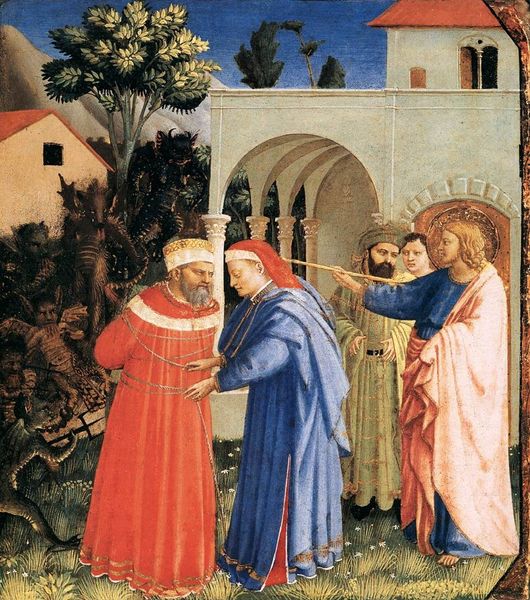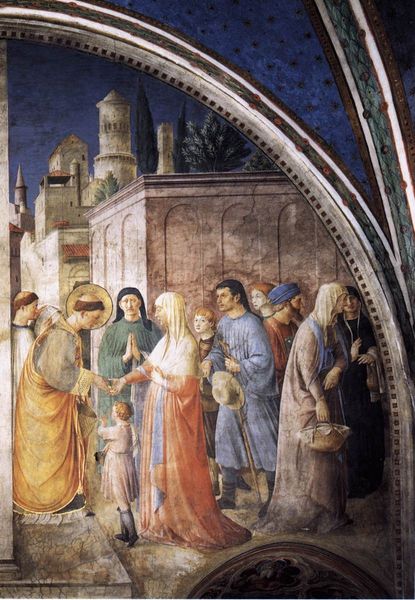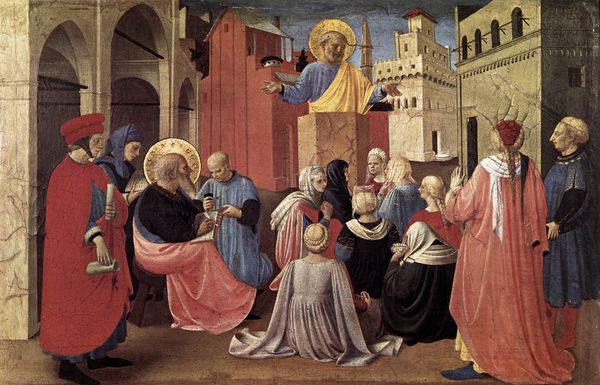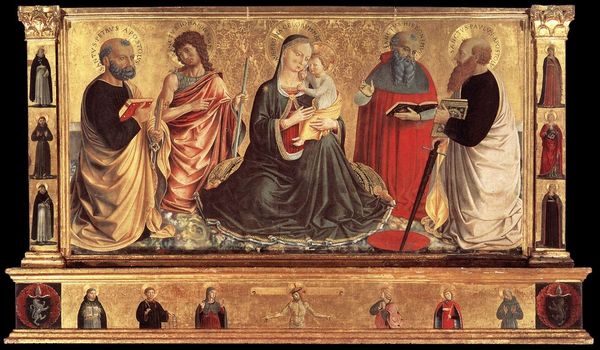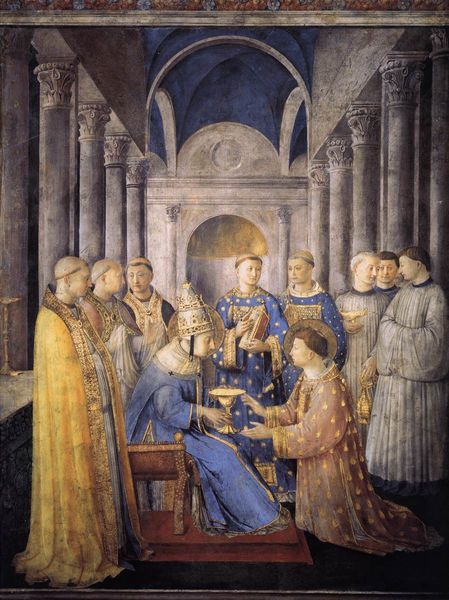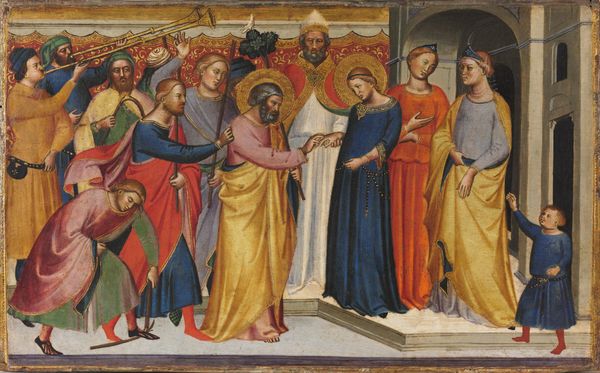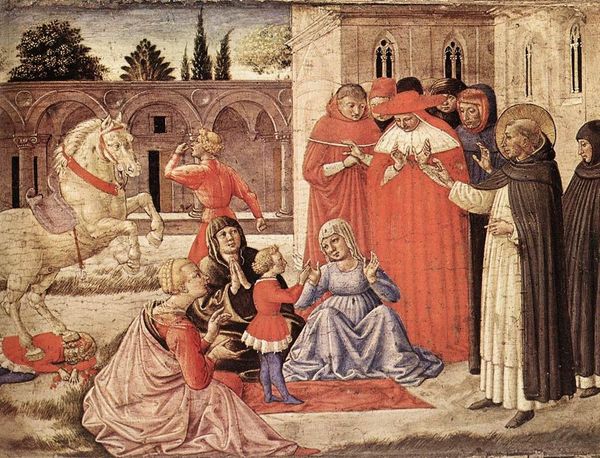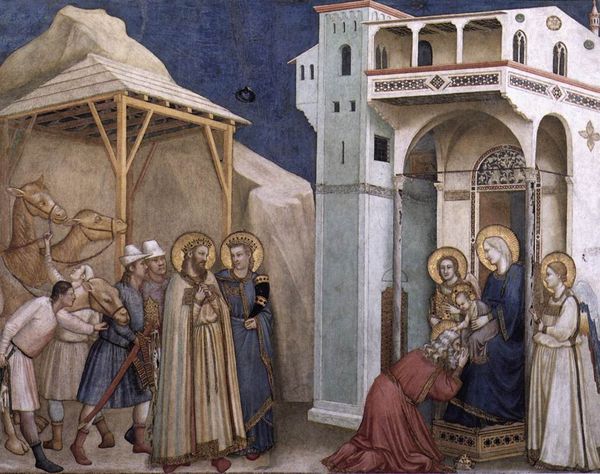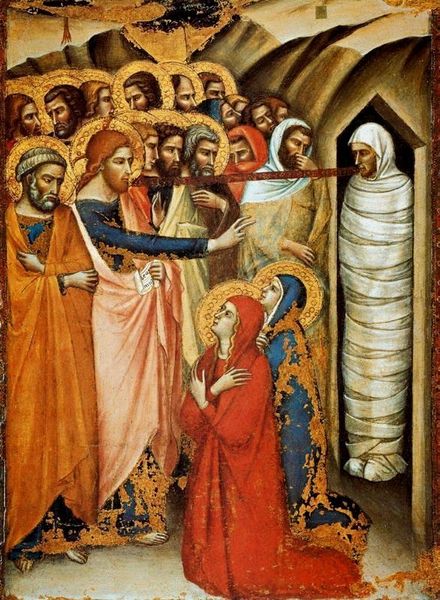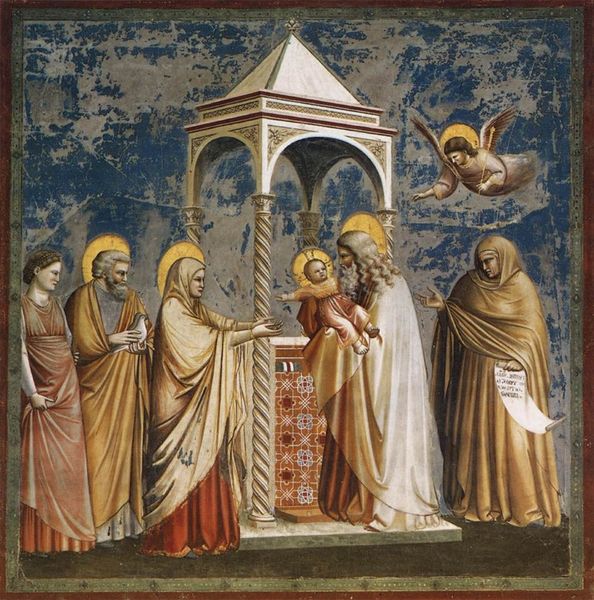
tempera, painting, fresco
#
portrait
#
tempera
#
painting
#
figuration
#
fresco
#
oil painting
#
christianity
#
history-painting
#
italian-renaissance
#
early-renaissance
#
virgin-mary
#
christ
Dimensions: 19 x 51 cm
Copyright: Public domain
Curator: Here we see Fra Angelico's "Marriage of the Virgin," painted in tempera, around 1432. It's a beautiful fresco located at the Basilica di San Marco in Florence, Italy. What strikes you initially about this scene? Editor: The color palette. Those soft blues and corals, especially in contrast to the more detailed architectural backdrop, lend it a sense of both piety and the everyday. I'm drawn to how the figures are arranged, too—there’s a definite sense of stagecraft at play. Curator: Exactly. It's staged to present very specific narratives, steeped in social and religious symbolism. The very act of marriage here becomes a societal linchpin. Editor: Agreed. The use of tempera, a demanding material, reflects an incredible dedication. The layers upon layers of pigment and egg yolk bind to create this otherworldly atmosphere while being extremely time-intensive. This itself is a commentary on labor and devotional making. Curator: And beyond that dedication is the way gender roles are defined. Look at how Mary’s gaze is directed downwards, in deference, which enforces the expectations of women within that specific Renaissance society. Joseph is portrayed as older, perhaps signaling his wisdom and authority. These details weren’t casual; they served specific ideological functions. Editor: The material value connects strongly to those ideological implications. Tempera was favored not just for its aesthetic properties, but for its associations with the purity and skill involved. What was required to mix the materials and paint reflected societal expectations for skilled labor. This mirrors how craft can both support and reinforce social hierarchies. Curator: A crucial point. By examining this work through intersectional lenses, we can appreciate how gender, labor, and materials all come together. This challenges a singular "masterpiece" reading to show the cultural frameworks at play. Editor: Absolutely. By considering not just "what" is depicted but also "how" and "why" such materials were used, we unlock a deeper understanding of the forces constructing those religious and social realities of the early Renaissance period. Curator: In reflecting on “Marriage of the Virgin”, I’m drawn to how understanding these interwoven elements reframes our perspectives, making art relevant to ongoing dialogues on power. Editor: Yes, the painting’s dedication to material speaks volumes. It emphasizes the way something is made directly influences how we interpret its significance.
Comments
No comments
Be the first to comment and join the conversation on the ultimate creative platform.

